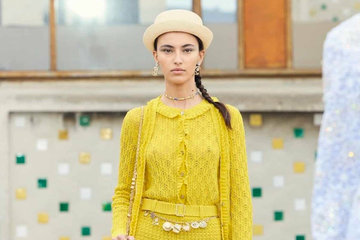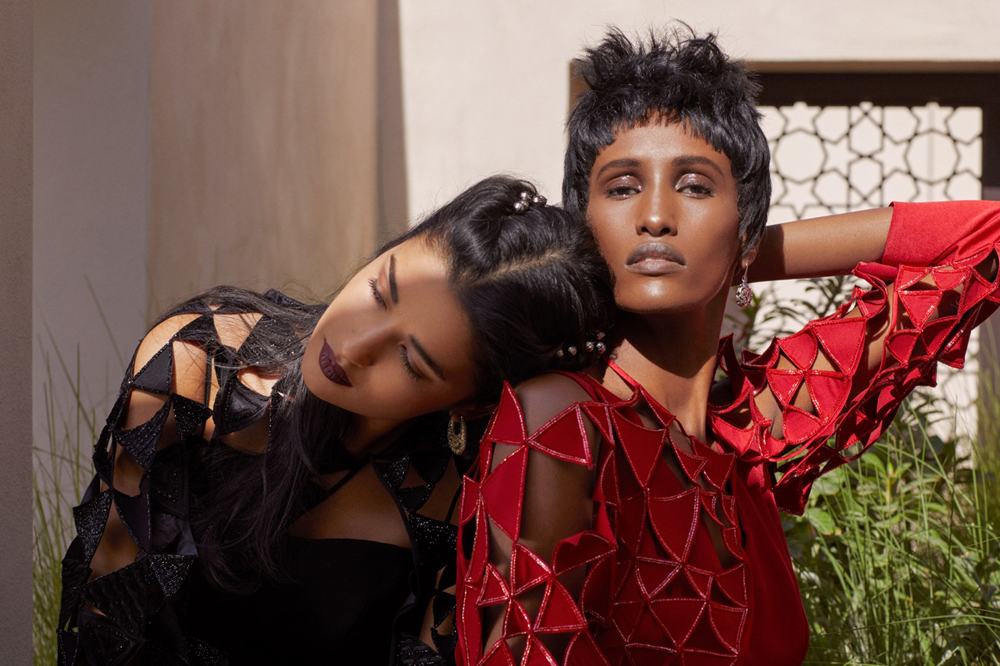
Aljawharah Sadeem Abdulaziz Alshehail is the driven and visionary Saudi designer behind Sadeem who puts her aesthetic and vision before fast fashion or trends as she explains, “Sadeem is a slow-fashion brand. I don’t follow seasons or trends,” she tells Vogue Arabia in a recent interview.
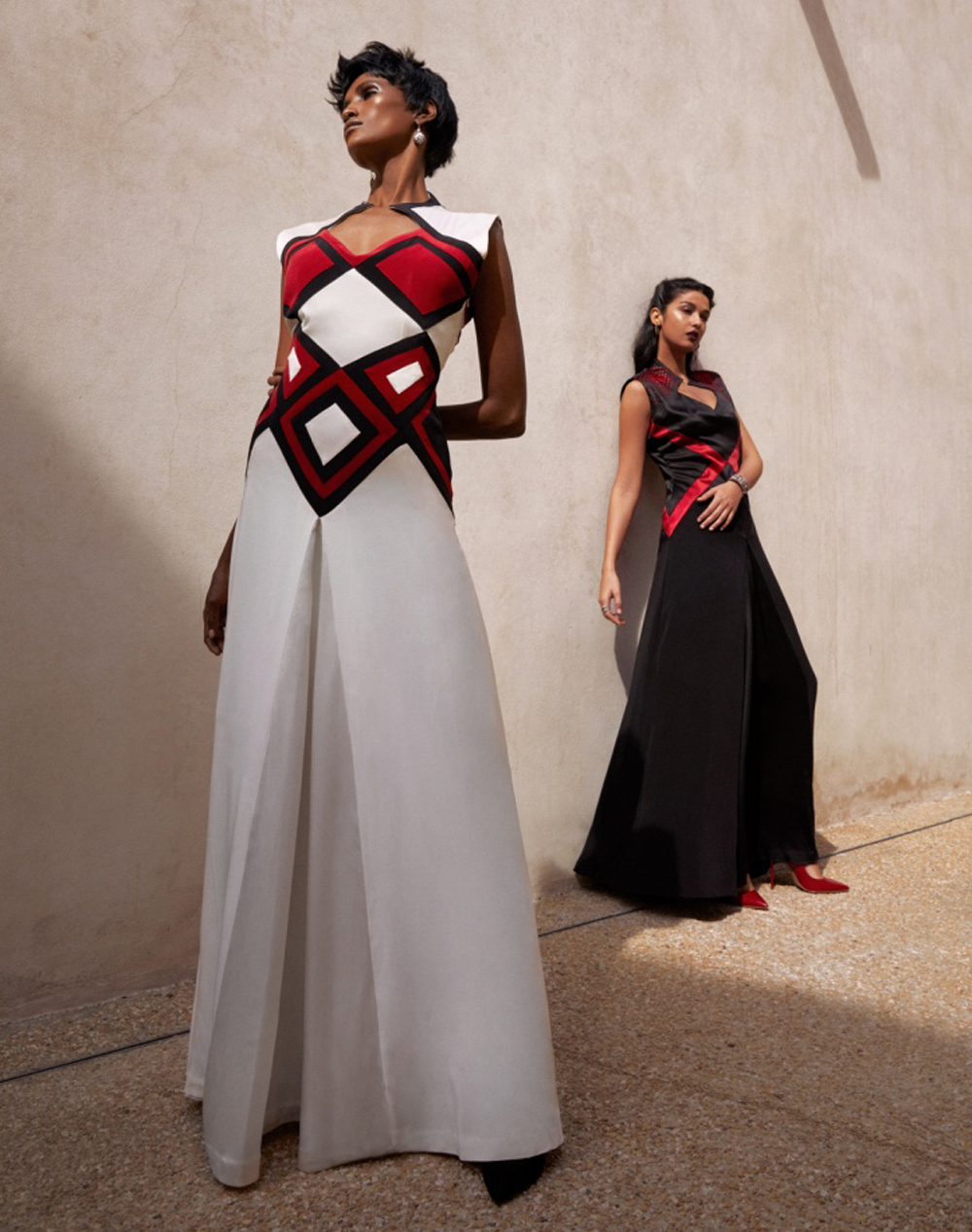
Taking the “slow fashion” stance, which means she does custom orders, makes use of high quality fabrics and chooses to produce her collections from within Saudi Arabia. Speaking about the inspiration behind her latest collection, Abwaab, she states how her homeland of Saudi Arabia plays a vital role in creating her 4th collection.
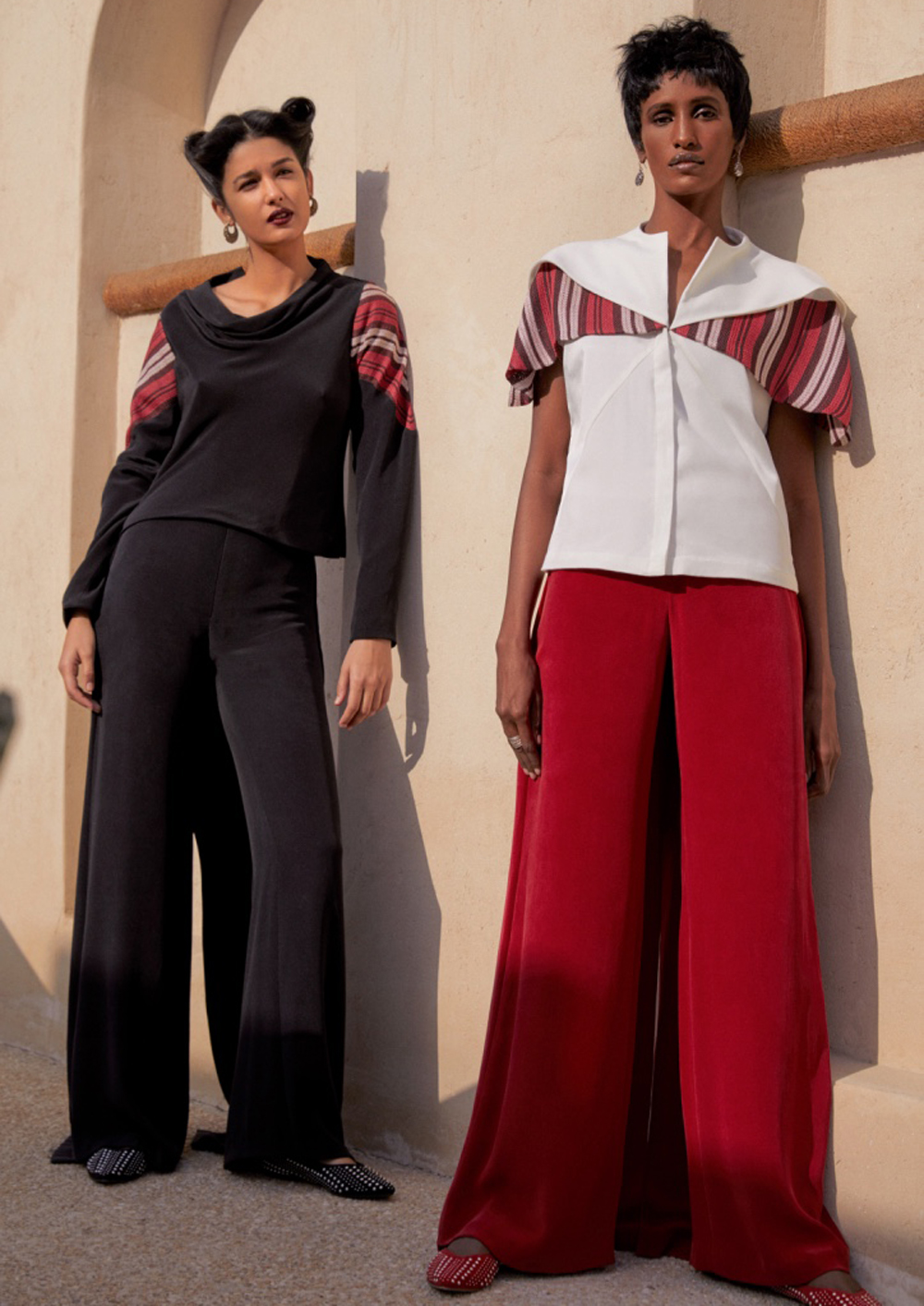
“Saudi has been exploring many of its untapped resources, with a very determined plan,” she says, “Citizens of both genders are encouraged to be active agents of change. Simple initiatives by our leadership has truly evolved the mindset and quality of living in Saudi Arabia.”
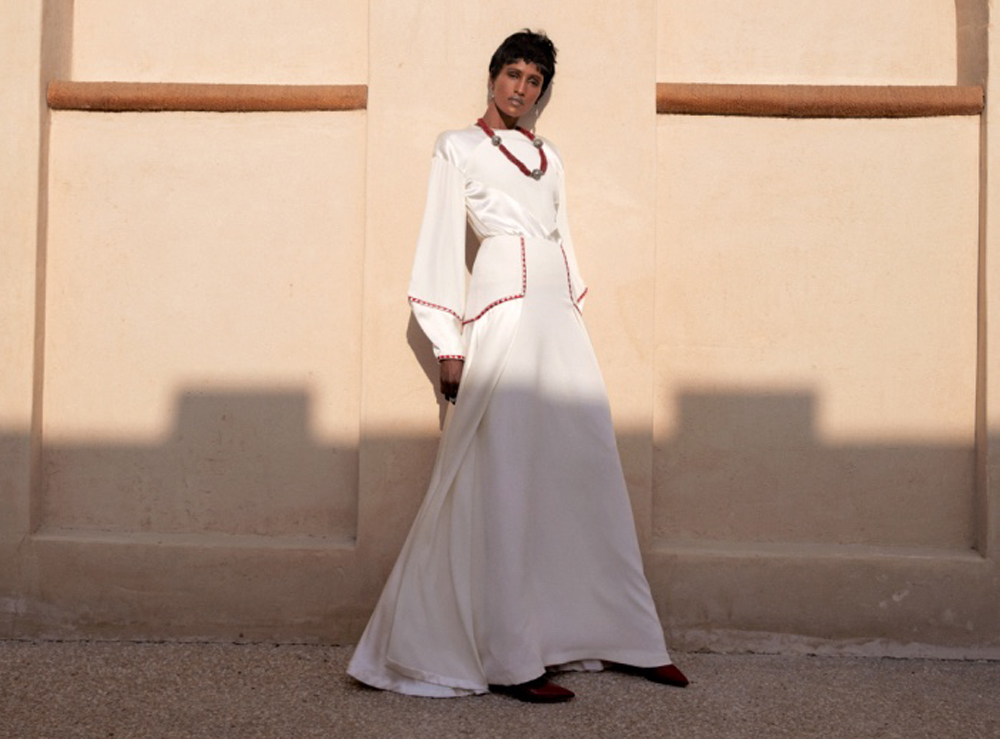
Whilst narrating this concept through Abwaab, Sadeem’s immaculately tailored, high end women’s wear pays homage to Saudi culture, costume, jewellery and architecture. With every detail considered meticulously, Alshehail’s most favoured choices of fabric include silk due to its “durability and biodegradability”, as she works closely with fabric suppliers and mills who utilize ecofriendly dying and printing techniques.
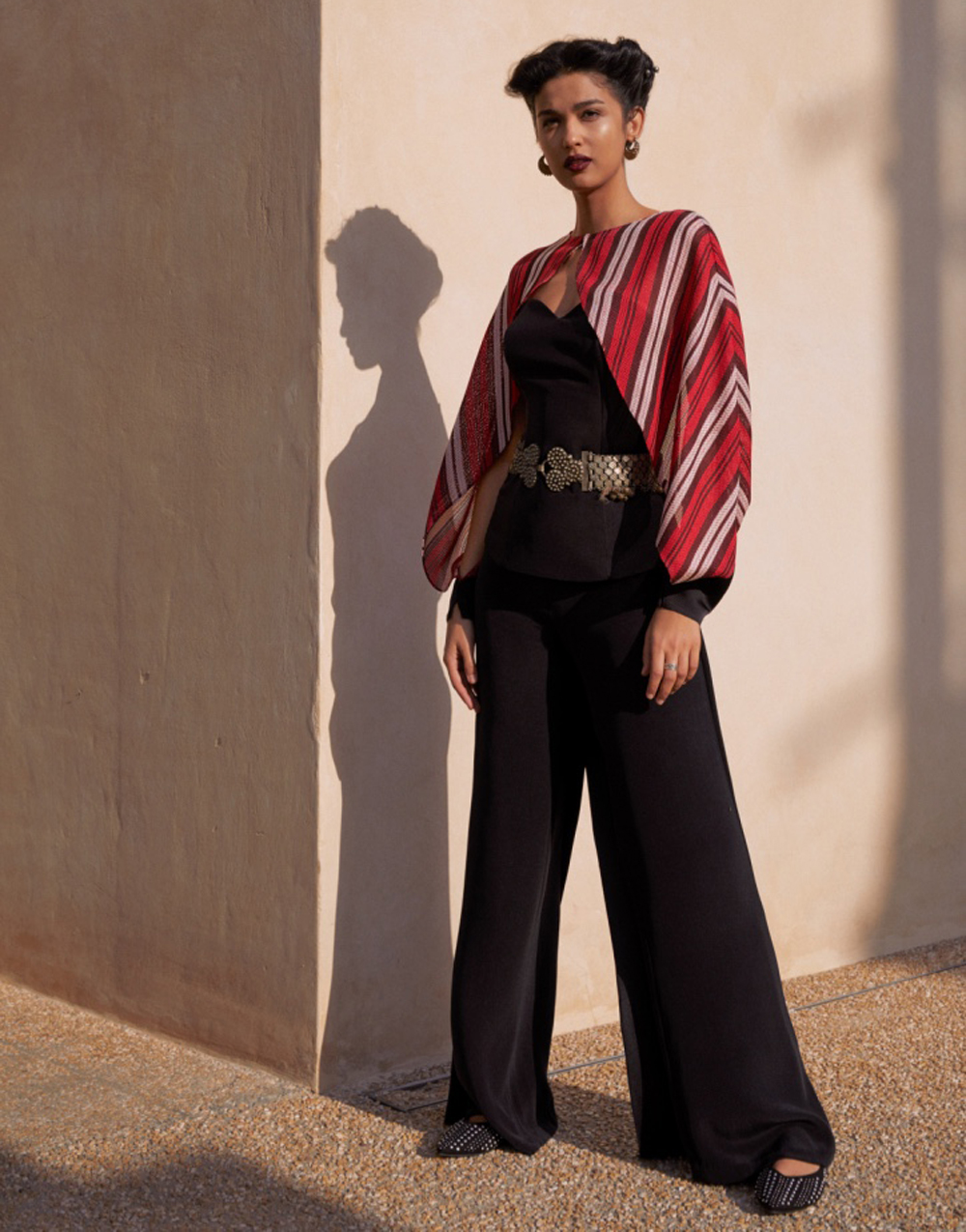
For Sadeem’s fourth collection, the Saudi born designer uses a bold colour palette, featuring an eye-catching shade of red that translates passion, love and power. Silhouettes are kept sharp and accented with repetitive cut out applique patterns and embroideries whilst being focused at an “ambitious and courageous, chic, poised, and understated” woman.
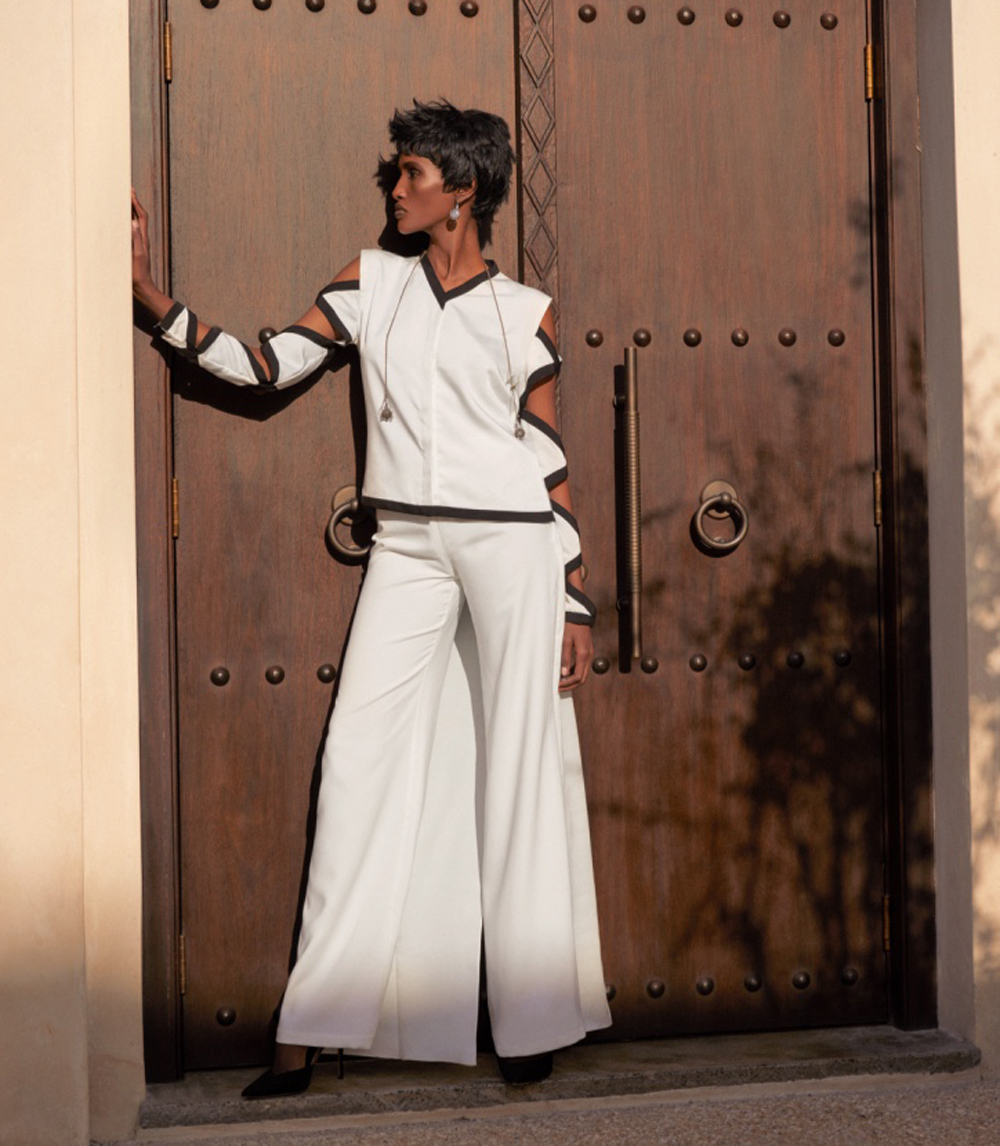
Referencing her childhood in the kingdom, Aljawharah spoke of the lack of RTW options in her hometown of Riyadh, “I’m a child of the 70s. Growing up in Riyadh required wearing specific attire that fit our customs and occasions. When we traveled for holidays, shopping clothes for the entire year was a necessity. I remember the joy of customizing long skirts for each outfit bought abroad. Burda sewing patterns were a must-have, and people ended up redesigning international trends with a modest and conservative twist.”
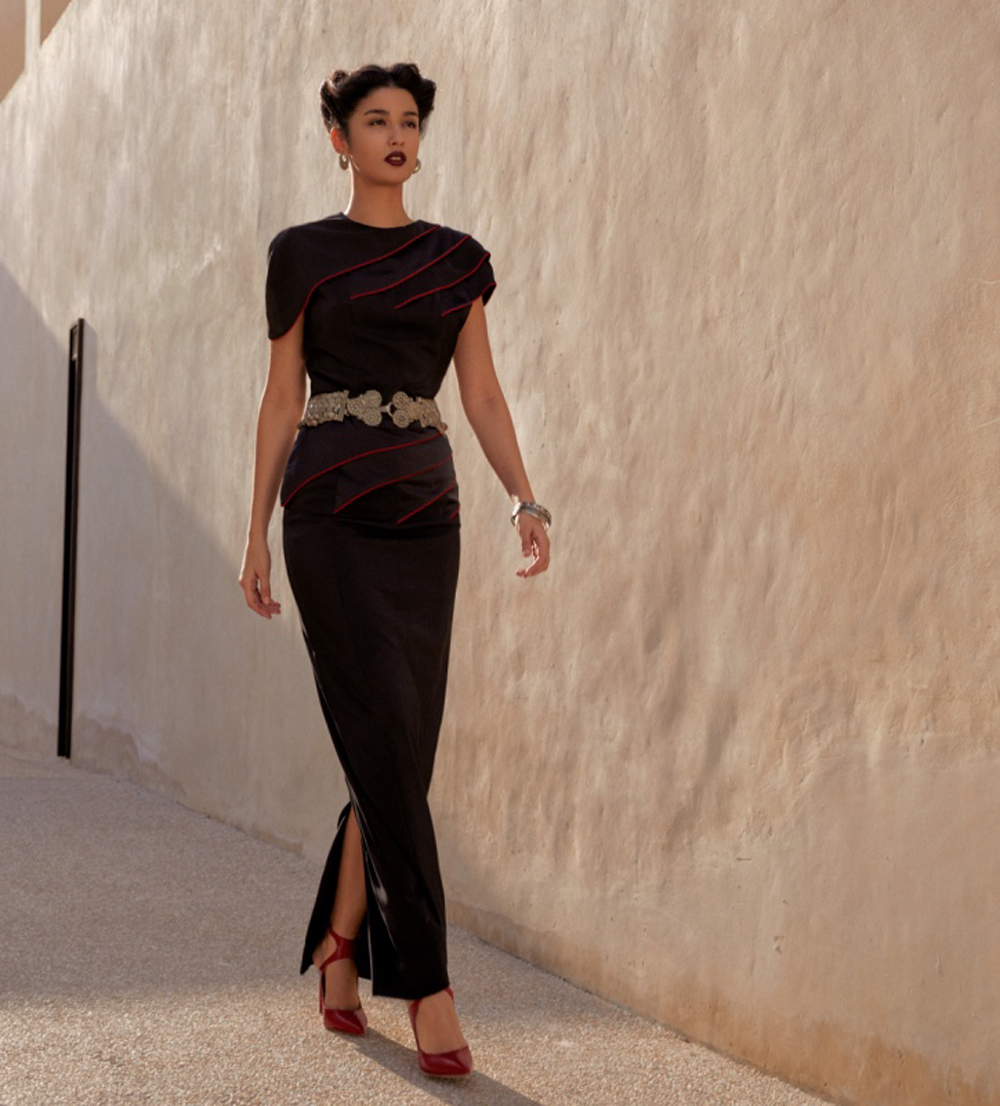
With her own label, the focused designer lays down the basic ground rules surrounding her brand’s ethics and how fast fashion doesn’t account for its impact on the earth, “Designs should be timeless and sewn with high quality in an environmentally friendly and ethical manner. When an item is no longer desired, I hope that it would be swapped or handed to a friend, a secondhand shop, or donated to charity.
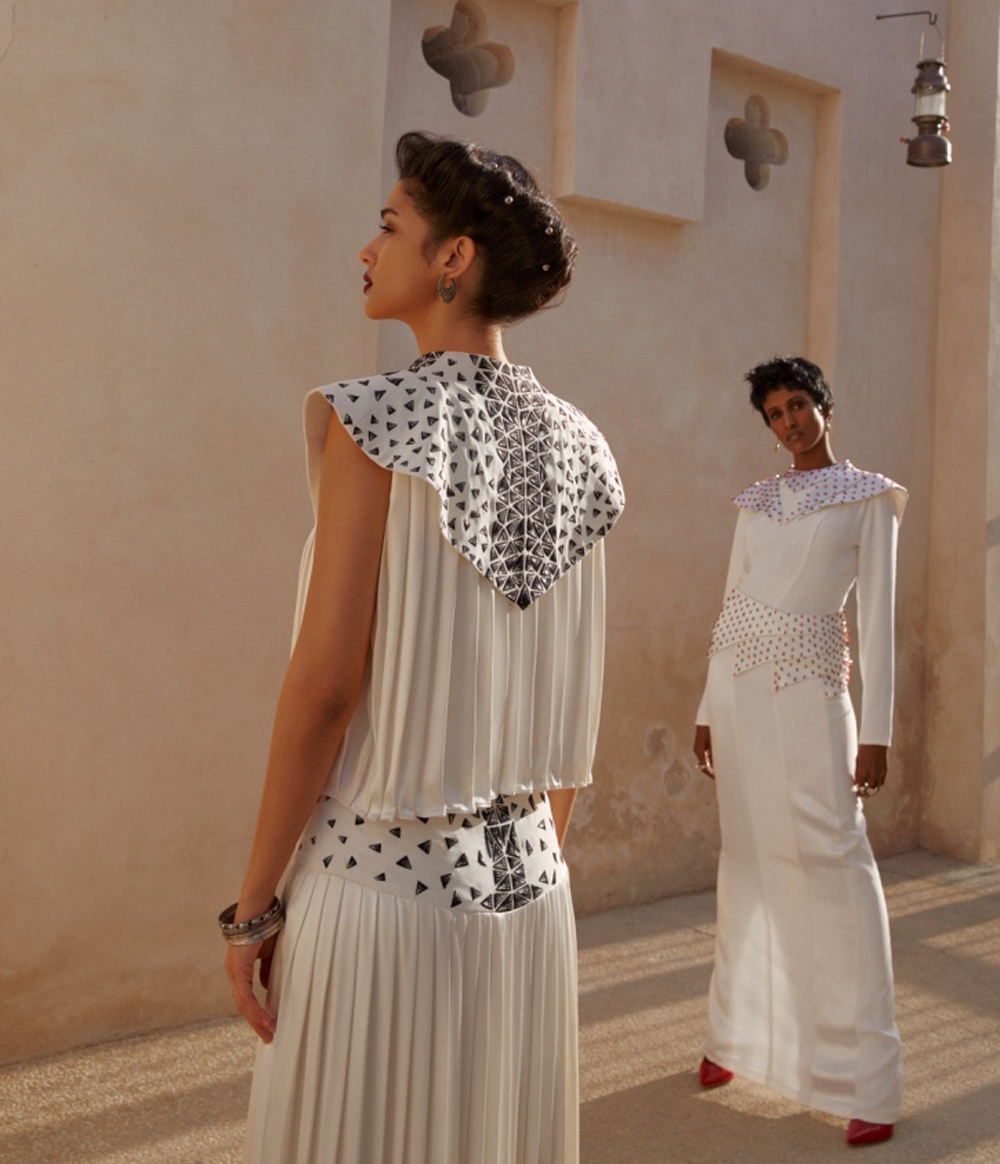
“If the garment is too worn, it can be sent to a textile recycling facility, where it can be reused for new clothes or other fabric products,” she continues, “Eco-friendly materials and high-quality tailoring are costly, but made to last. Fast fashion has made it easy for people to forget that when you pay next to nothing for an outfit, someone else is paying for it.”

